This Month in Aviation History:Dec. 12, 1953: Maj. Chuck Yeager flies his Bell X-1A to March 2.435, approximately 1,650 miles per hour, at Edwards Air Force Base, Calif.
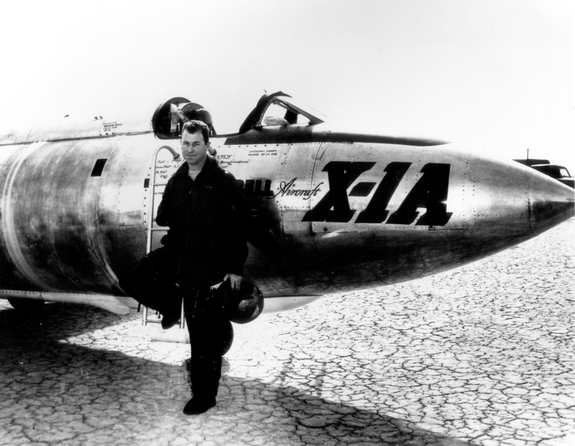 At Mach 2.4 at 80,000 feet the aircraft spun out of control, spinning on all 3 axes. G-forces sent Yeager’s head into the canopy, cracking it and bending the control stick. The aircraft spun down 51,000 feet in 51 seconds before he regained control at 25,000 feet.
At Mach 2.4 at 80,000 feet the aircraft spun out of control, spinning on all 3 axes. G-forces sent Yeager’s head into the canopy, cracking it and bending the control stick. The aircraft spun down 51,000 feet in 51 seconds before he regained control at 25,000 feet.
His speed record that day stood for the next 3 years.
Follow along with the original cockpit audio and transcript of that flight.
This photo of the X-1A included graphs of the flight data from Maj. Charles E. Yeager’s Mach 2.44 flight on December 12, 1953. (This was only a few days short of the 50th anniversary of the Wright brothers’ first powered flight.) After reaching Mach 2.44, then the highest speed ever reached by a piloted aircraft, the X-1A tumbled completely out of control. The motions were so violent that Yeager cracked the plastic canopy with his helmet. He finally recovered from a inverted spin and landed on Rogers Dry Lakebed.
Among the data shown were Mach number and altitude (the two top graphs). The speed and altitude changes due to the tumble were visible as jagged lines. The third graph from the bottom showed the G-forces on the airplane. During the tumble, these twice reached 8 Gs or 8 times the normal pull of gravity at sea level. (At these G forces, a 200-pound human would, in effect, weigh 1,600 pounds if a scale were placed under him in the direction of the force vector.) Producing these graphs was a slow, difficult process. The raw data from on-board instrumentation recorded on oscillograph film. Human computers then reduced the data and recorded it on data sheets, correcting for such factors as temperature and instrument errors. They used adding machines or slide rules for their calculations, pocket calculators being 20 years in the future.
12 Dec 1953
NASA Photo
Read more:http://www.chuckyeager.org/news/week-history-control/


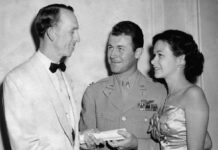


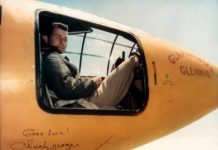
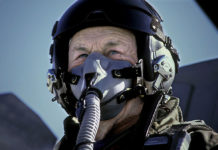





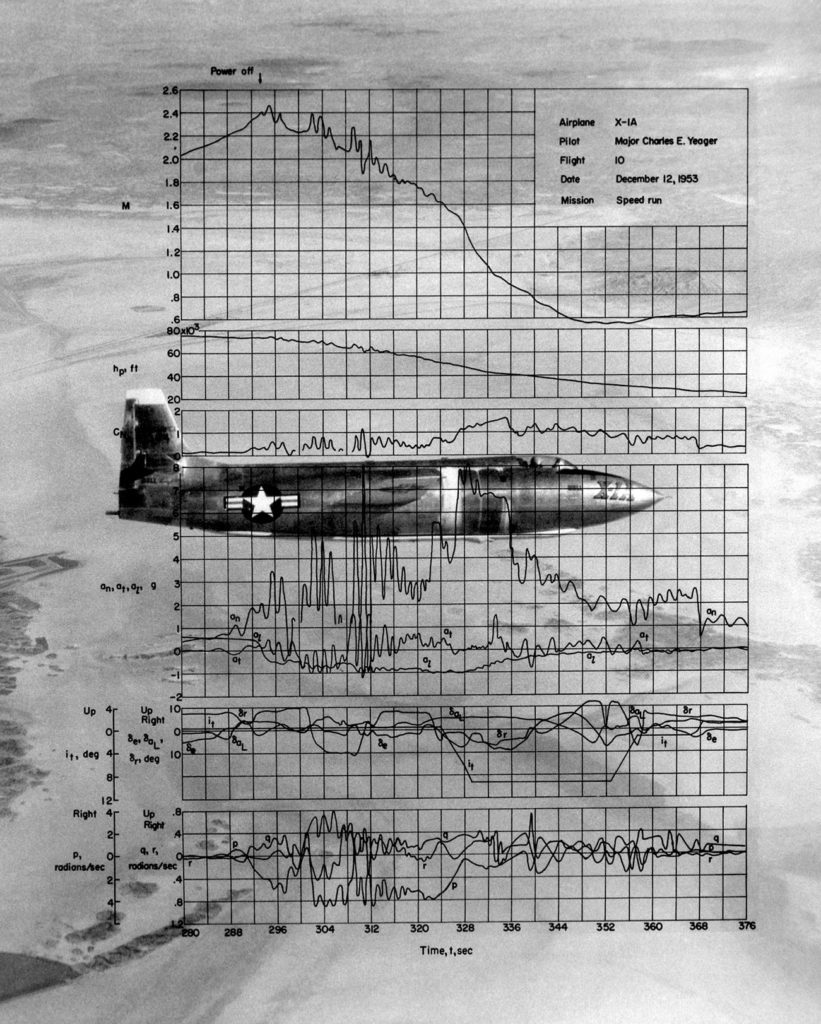



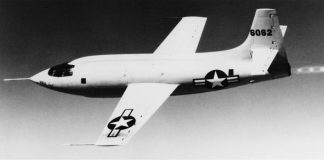
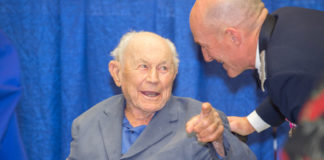
The reduction was 1612 mph. I believe the uncertainty was more than one percent. I think he was already a little down from 76000 feet when she uncorked — the peak speed was in a shallow dive. I believe that early on Yeager cranked in full down trim, I am not sure why. Maybe he had an inkling that he should treat that mess as a spin. I believe that the plane slowed down into an inverted spin and Yeager, still beat up, recovered from there. He claimed he had spun the X-1 (presumably 6062) previously.
He had several interesting comments to the effect I’ll never do that again and If I had a seat I would have used it (ejection seat).
The comparison with Apt in the X-2 departure in enlightening. Apt had no experience in the plane and much flight test experience than Yeager. Also, he may not have fully shared Yeager’s tremendous toughness. He apparently forgot that the rudder was locked, which may have made spin recovery more difficult. And he did have an escape system so he did not have to fight it all the way. (Though if that degraded into an inverted flat spin……) Also the view from the cockpit was poorer, spin recovery was probably poorer.
The proximity to the 50th anniversary of flight was important in the rush to top speed, as they wanted to beat the NAS M2.005 record of Crossfield in a Navy plane. Yeager had already been scheduled to leave — and was eager to leave — when they dumped the -1A in his lap.
Note that in extreme off axis angles, the Pitot data will degrade.